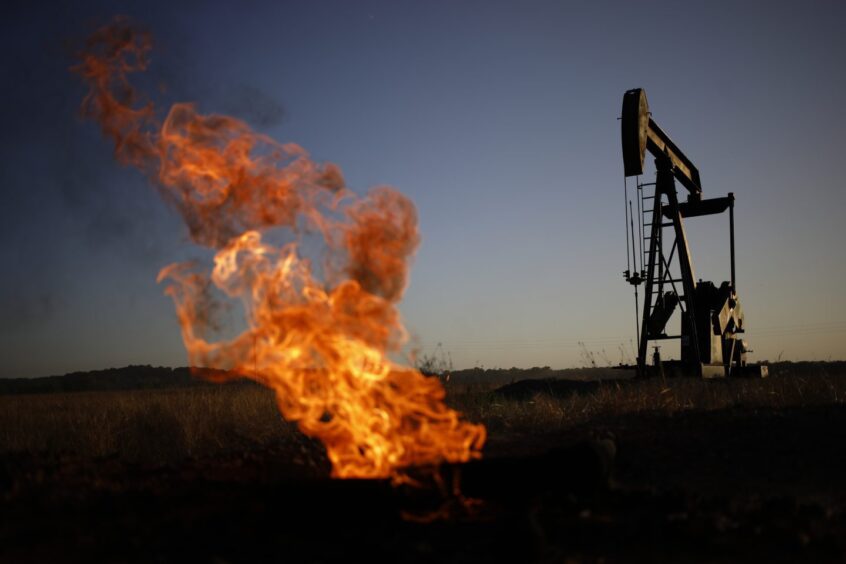
The burning of excess natural gas from global oil fields hit its highest level since 2019 last year, spewing enough pollutants into the atmosphere to equal those from an extra five million cars, according to a World Bank report.
Gas flaring by oil and gas producers rose by about 7% last year to 148 billion cubic meters compared to 2022, the World Bank’s Global Gas Flaring Tracker Report said Thursday. The increase in flaring resulted in an additional 23 million tons of carbon dioxide equivalent emissions.
Oil production remained relatively stable in the period, resulting in a 5% increase in the amount of gas flared per barrel produced, the report said. The increase in flaring activity marks a reversal to reductions seen between 2021 and 2022, undermining a World Bank initiative to end routine flaring within six years.
“This suggests that the global efforts to reduce gas flaring have not been sustainable,” the World Bank said. “Urgent action is required if the world is to achieve zero routine flaring by 2030.”
The oil and gas sector is responsible for about a fifth of human-made methane emissions due to leaks and gas flaring, half of which come from producers in developing nations, according to the World Bank.
Methane is the primary component of natural gas and has more than 80 times the warming power of carbon dioxide during its first 20 years in the atmosphere. Halting releases of the potent greenhouse gas from coal, oil and gas operations are widely agreed to be one of the fastest, cheapest ways to lower global temperatures.
Recommended for you
